|
-
Very Active Member

 Your thoughts on shifting and front pulley longevity wanted Your thoughts on shifting and front pulley longevity wanted
So we have a 2018 RT-L with the semi-automatic transmission.
I was experimenting with various rpms on which to upshift, and I have found that the 2900-3100 rpm range provides the smoothest transition to the next gear. When I upshift north of 3500 rpms, I find that I am rewarded with a jerky, almost violent, transition.
It is my opinion that shifting around 3000 plus/minus 100 rpms MOST of the time will make the front pulley last longer. However, every once in a while when I really have to get on the gas, I shift close to 4k, and I cringed a little bit because it is so abrupt.
Wondering what your thoughts are on this ....
SIGNATURE PIC CURRENTLY UNDER CONSTRUCTION
2016 Toyota Sienna SE - hers
2002 BMW 325i - his
1994 Chevrolet Silverado K1500 Sportside Z71 - whoevers vehicle is in the shop
2009 Harley-Davidson Sportster XL883 Low (Vivid Black) - his
2018 Can-Am Spyder RT Limited - hers
2007 Harley-Davidson Sportster XL883 Low (Pearl White) - hers (SOLD 02/29/20)
2011 Tao Tao 50 - whoevers bike is in the shop
2007 Reinell 186 FNS - the dog's
1995 Fleetwood Flair 27R - EVERYBODY'S !

-
Very Active Member
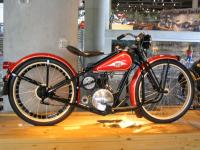

I have found that the key to smooth shifting, no matter the RPM, is to have your throttle hand absolutely still. I have grabbed smooth shifts as high as 5500 RPM, just by not moving my right hand.⁹
Ours is a red, black and chrome 2017 F3 Limited. Bought new in 2/2019. The avatar is my first bike back in 1952, a Simplex Servi-Cycle. Photo taken at the Barber Museum.
-
Very Active Member
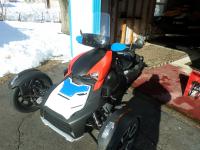

It has been suggested belt tension, heat and humidity, and smooth shifting are All factors.
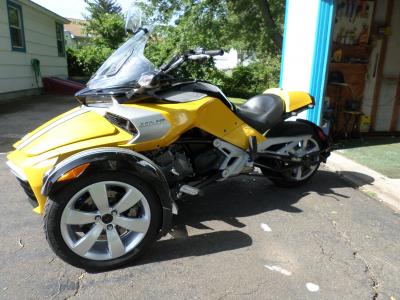 2015 F3 sm6, Custom Dynamics fender lights.
2015 F3 sm6, Custom Dynamics fender lights.
Sea Doo GTI-SE 90 Jet Ski!!
-
Very Active Member


 Originally Posted by RICZ

I have found that the key to smooth shifting, no matter the RPM, is to have your throttle hand absolutely still. I have grabbed smooth shifts as high as 5500 RPM, just by not moving my right hand.⁹
Wow, that's high.
My right hand is as still as I can possibly have it, but for some reason, it's still not really smooth.
Now I'm wondering if our bike has some issues I don't know about ....
SIGNATURE PIC CURRENTLY UNDER CONSTRUCTION
2016 Toyota Sienna SE - hers
2002 BMW 325i - his
1994 Chevrolet Silverado K1500 Sportside Z71 - whoevers vehicle is in the shop
2009 Harley-Davidson Sportster XL883 Low (Vivid Black) - his
2018 Can-Am Spyder RT Limited - hers
2007 Harley-Davidson Sportster XL883 Low (Pearl White) - hers (SOLD 02/29/20)
2011 Tao Tao 50 - whoevers bike is in the shop
2007 Reinell 186 FNS - the dog's
1995 Fleetwood Flair 27R - EVERYBODY'S !

-
Very Active Member


 Originally Posted by Sarge707

It has been suggested belt tension, heat and humidity, and smooth shifting are All factors.
Perhaps you're right.
It just feels really nice to barely feel a shift at a certain rpm....
SIGNATURE PIC CURRENTLY UNDER CONSTRUCTION
2016 Toyota Sienna SE - hers
2002 BMW 325i - his
1994 Chevrolet Silverado K1500 Sportside Z71 - whoevers vehicle is in the shop
2009 Harley-Davidson Sportster XL883 Low (Vivid Black) - his
2018 Can-Am Spyder RT Limited - hers
2007 Harley-Davidson Sportster XL883 Low (Pearl White) - hers (SOLD 02/29/20)
2011 Tao Tao 50 - whoevers bike is in the shop
2007 Reinell 186 FNS - the dog's
1995 Fleetwood Flair 27R - EVERYBODY'S !

-
Very Active Member


.
Well--- I've shifted at a much higher RPM ( the ECU flash sure makes it come alive) and with the throttle open it shifts just fine. It's not a slush box transmission. There is no torque converter/ liquid connection. When we shift, the ECU cuts the throttle for the millisecond it take the constant mesh transmission to shift. I also get a rough shift if I ease the throttle-- it likes to be on the boil so to speak.
Lou, try shifting ( at your chosen RPM) with the throttle open some and still accelerating ---- see what you get. We are going on a ryde tomorrow........... See the Face book / BattleBorn Spyders for info.
Lew L
Lew
Kaos----- Gone but not forgotten. 
2014 RTS in Circuit Yellow, farkle-ing addiction down to once every few months. ECU FLASH IS GREAT. 
-
Very Active Member

-

It takes a bit of practice but on a cold start if you shift your SE6 into first right after it fires and before the tac starts to rise, you can achieve a smooth quiet shift. Then shift into reverse if needed without that annoying CLUNK. If you miss that sweet spot, you'll hear about it, KA WHACK! I prefer shifting at low RPMs also. 28k to 32k depending on traffic. Recommended shifting RPMs from other sources say that from a cold start you should not exceed one-third of your MAX RPM range until you've reached normal operating temperature. I shift by feel and hearing (engine noise). Been doing it that way for so long it's a subconscious movement.
-
Very Active Member


 Originally Posted by Lew L

.
Well--- I've shifted at a much higher RPM ( the ECU flash sure makes it come alive) and with the throttle open it shifts just fine. It's not a slush box transmission. There is no torque converter/ liquid connection. When we shift, the ECU cuts the throttle for the millisecond it take the constant mesh transmission to shift. I also get a rough shift if I ease the throttle-- it likes to be on the boil so to speak.
Lou, try shifting ( at your chosen RPM) with the throttle open some and still accelerating ---- see what you get. We are going on a ryde tomorrow........... See the Face book / BattleBorn Spyders for info.
Lew L
Lew
Wish I could go with the group, but I am on-call all day tomorrow.
SIGNATURE PIC CURRENTLY UNDER CONSTRUCTION
2016 Toyota Sienna SE - hers
2002 BMW 325i - his
1994 Chevrolet Silverado K1500 Sportside Z71 - whoevers vehicle is in the shop
2009 Harley-Davidson Sportster XL883 Low (Vivid Black) - his
2018 Can-Am Spyder RT Limited - hers
2007 Harley-Davidson Sportster XL883 Low (Pearl White) - hers (SOLD 02/29/20)
2011 Tao Tao 50 - whoevers bike is in the shop
2007 Reinell 186 FNS - the dog's
1995 Fleetwood Flair 27R - EVERYBODY'S !

-
Very Active Member


My thoughts are you are not doing the machine any favors by staying at low RPMs all the time. Pulley may be fine, but other things need to be considered. An example. My riding buddy couldn't figure why he was having so much trouble with the rear drive of his BMW. He NEVER ran the bike over 4000 rpm so whats the problem? Finally on the third trip to a dealer he found a good BMW tech who asked a ton of questions. Come to find out the gentle throttle use and the low RPMs were what was killing the rear drive. The BMW is geared rather high and 4000 rpm in the higher gears was lugging the engine and the power pulses from the lugging engine were destroying the final drive. Buddy altered his riding style and the rear drive never went south again. I'm not saying ride it like you stole it, but in the long run you may be causing damage much more expensive than replacing a front pulley.
-
Very Active Member


Upon what scientific evidence do you base your opinion that shifting at the rpm range you state will prevent damage to the front pulley. If the pulley was properly installed and the bolt was properly torqued during assembly the pulley should run for many, many thousands of miles with zero problems. Yes, there have been pulley failures reported hereon but what percentage of the total number of Spyders do those failures represent? Yes, sometimes there are Monday morning or Friday afternoon assemblies that don't meet specification because of less than attentive individuals on assembly lines, but how is one to know? Ride more, worry less!
Artillery lends dignity to what would
otherwise be a vulgar brawl.
******************************
Cognac 2014 RT-S
-
Very Active Member
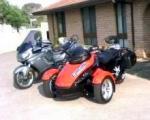

Opinions aside, the fact that front pulley failures is not uncommon, leaving folks stranded sometimes, is not a major worry for some - for others it is. The reliability of this issue has been a concern from day 2.
The best substitute for brains & knowledge is....................silence.
-
Very Active Member


2014 RTS, still on the original pulley. Since installation of exhaust bypass pipe, the engine freed up. For years the majority of shifts are between 3500 and 4500 rpm. Shift feel is firm but smooth.
The lower the engines rpm, the less horsepower is produced. Less power applied into the splines will reducing fretting corrosion, and essentially make the front pulley last longer. Kind of the equivalent where if the Spyder is never ridden at all, the pulley will not wear out.
-
Ozzie Ozzie Ozzie


I really like your closing sentence Jay Bros, but when it comes to the 'what scientific evidence' bit, a comment that often gets raised in threads like this, I get the distinct impression that at least some of those who do so are missing the point of 'The Scientific Method'!  . So with that in mind - & I'm really NOT having a go at you Jay, or at any one person/poster in doing this, cos it's applicable to the discussion many posts/threads & comments from many posters, but you gave me the opportunity to have a bit of a humorous play with it so I'll use this thread/discussion as an example & in the process try not to get too far off topic by throwing this out there.... . So with that in mind - & I'm really NOT having a go at you Jay, or at any one person/poster in doing this, cos it's applicable to the discussion many posts/threads & comments from many posters, but you gave me the opportunity to have a bit of a humorous play with it so I'll use this thread/discussion as an example & in the process try not to get too far off topic by throwing this out there....
Firstly, I think it's worthy to consider that this IS a Forum for those who share an interest in these machines, where like minded people can ask questions &/or share & discuss their thoughts & ideas as well as their experience & knowledge with Spyders/Rykers etc; while also keeping in mind what Peacekeeper's done/how he's gone about this and maybe even consider why he's started this thread; and finally, let's remember exactly what 'The Scientific Method' that we use to arrive at scientific evidence really is... for those who may not be specifically aware of the method, briefly, it can be summarised as follows:
Step 1: Make Observations - OK, he's obviously done that;
Step 2: Form a Hypothesis - clearly, he's done that too, cos he's told us what his hypothesis is;
Step 3: Make a prediction - he's told us that he thought the 2900-3100 rpm range provides the smoothest transition to the next gear & tested it. (Oops, jumping the gun there!);
Step 4: Do some empirical testing/perform an experiment - OK, already let that outta the bag, he's done that too - he hasn't told us his testing methodology in great detail, but hey, changing gears is changing gears;
Step 5: Analyse the results - once again he's clearly done this step too, cos he's told what he's found - OK, not in great detail, but then stripped pulleys is stripped... ;
Step 6: Draw a Conclusion - and he's told us what HIS conclusion is, that's probably why he started this thread, and that leads us on to the next step;
Step 7: Report/Publish to allow Peer review, so they can repeat/do further testing, and refine or rebut his Conclusion - and here we are, reading & considering HIS Report that shows how he's used the Scientific method to arrive at a Conclusion, which he's presented, and gone on to ask us for our thoughts....
So THERE ^^ is his Scientific Evidence  (sorry bout that pokey out bit, but it just went so well with the 'so there' bit that I just hadta!! (sorry bout that pokey out bit, but it just went so well with the 'so there' bit that I just hadta!!  ) )
Now.... if WE, his peers & reviewers, are going to apply the Scientific Method to our consideration of Peacekeeper's Conclusion, we really need to start at Step 1 ourselves & follow the process thru, doing our own empirical testing along the way to see if his conclusion stands up under all conditions/different tests/conditions etc; or we could just jump straight over those early steps or even jump directly into the 'argument followed by name calling then physical violence' steps of the Pub Rules of Argument & Engagement... 
As for me, I'm all for getting out there & conducting MY OWN experiments on gear changing & how the front pulley stands up to it!  So I'm gonna go... So I'm gonna go...
Ryde More! Worry Less!! 
Author's note: I hope you all enjoyed this brief interlude (  ) & discussion of how 'The Scientific Method' applies to the subject matter and presentation of this thread. Next week, we'll be discu... what? Oh. ) & discussion of how 'The Scientific Method' applies to the subject matter and presentation of this thread. Next week, we'll be discu... what? Oh.  Sorry - that's all for now. Bye. Sorry - that's all for now. Bye. 
2013 RT Ltd Pearl White
Ryde More, Worry Less!
-
Very Active Member


 Originally Posted by Navydad

My thoughts are you are not doing the machine any favors by staying at low RPMs all the time. Pulley may be fine, but other things need to be considered. An example. My riding buddy couldn't figure why he was having so much trouble with the rear drive of his BMW. He NEVER ran the bike over 4000 rpm so whats the problem? Finally on the third trip to a dealer he found a good BMW tech who asked a ton of questions. Come to find out the gentle throttle use and the low RPMs were what was killing the rear drive. The BMW is geared rather high and 4000 rpm in the higher gears was lugging the engine and the power pulses from the lugging engine were destroying the final drive. Buddy altered his riding style and the rear drive never went south again. I'm not saying ride it like you stole it, but in the long run you may be causing damage much more expensive than replacing a front pulley.
I don't normally lug the engine, but according to the manual, shifting at 3000 rpms is considered normal.
Don't get me wrong, I usually don't do this all the time. When there are no vehicles behind me at a stop light, I "lollygag" through the gears. However, if there ARE vehicles behind me, I tend to hammer down and shift at rpms well north of 3500.
Last edited by Peacekeeper6; 11-13-2021 at 11:28 PM.
Reason: edit
SIGNATURE PIC CURRENTLY UNDER CONSTRUCTION
2016 Toyota Sienna SE - hers
2002 BMW 325i - his
1994 Chevrolet Silverado K1500 Sportside Z71 - whoevers vehicle is in the shop
2009 Harley-Davidson Sportster XL883 Low (Vivid Black) - his
2018 Can-Am Spyder RT Limited - hers
2007 Harley-Davidson Sportster XL883 Low (Pearl White) - hers (SOLD 02/29/20)
2011 Tao Tao 50 - whoevers bike is in the shop
2007 Reinell 186 FNS - the dog's
1995 Fleetwood Flair 27R - EVERYBODY'S !

-
Very Active Member


 Originally Posted by JayBros

Upon what scientific evidence do you base your opinion that shifting at the rpm range you state will prevent damage to the front pulley. If the pulley was properly installed and the bolt was properly torqued during assembly the pulley should run for many, many thousands of miles with zero problems. Yes, there have been pulley failures reported hereon but what percentage of the total number of Spyders do those failures represent? Yes, sometimes there are Monday morning or Friday afternoon assemblies that don't meet specification because of less than attentive individuals on assembly lines, but how is one to know? Ride more, worry less!
I don't have any "scientific evidence".
I'm just going by feel and experience really. Logic states that if there are enough "abruptness" (for a lack of a better term) during high rpm shifting, there will be more stress on the splines of the front sprocket during the transition to the next gear. That's just a given.
Do I have proof ?? No, I don't, but TO ME, it makes perfect sense: smoother shifts results in less stress on many of the components of the drivetrain.
Less stress = longer life (and this statement goes with us humans as well, not just mechanical things).
Last edited by Peacekeeper6; 11-13-2021 at 11:26 PM.
Reason: edit
SIGNATURE PIC CURRENTLY UNDER CONSTRUCTION
2016 Toyota Sienna SE - hers
2002 BMW 325i - his
1994 Chevrolet Silverado K1500 Sportside Z71 - whoevers vehicle is in the shop
2009 Harley-Davidson Sportster XL883 Low (Vivid Black) - his
2018 Can-Am Spyder RT Limited - hers
2007 Harley-Davidson Sportster XL883 Low (Pearl White) - hers (SOLD 02/29/20)
2011 Tao Tao 50 - whoevers bike is in the shop
2007 Reinell 186 FNS - the dog's
1995 Fleetwood Flair 27R - EVERYBODY'S !

-
Very Active Member


 Originally Posted by Freddy

Opinions aside, the fact that front pulley failures is not uncommon, leaving folks stranded sometimes, is not a major worry for some - for others it is. The reliability of this issue has been a concern from day 2.
Agreed.
Hey, I paid good money for this bike. I want to make damn sure I treat it right and make components last as long as they can.
But that's just me ....
SIGNATURE PIC CURRENTLY UNDER CONSTRUCTION
2016 Toyota Sienna SE - hers
2002 BMW 325i - his
1994 Chevrolet Silverado K1500 Sportside Z71 - whoevers vehicle is in the shop
2009 Harley-Davidson Sportster XL883 Low (Vivid Black) - his
2018 Can-Am Spyder RT Limited - hers
2007 Harley-Davidson Sportster XL883 Low (Pearl White) - hers (SOLD 02/29/20)
2011 Tao Tao 50 - whoevers bike is in the shop
2007 Reinell 186 FNS - the dog's
1995 Fleetwood Flair 27R - EVERYBODY'S !

-
Very Active Member


 Originally Posted by PMK

2014 RTS, still on the original pulley. Since installation of exhaust bypass pipe, the engine freed up. For years the majority of shifts are between 3500 and 4500 rpm. Shift feel is firm but smooth.
The lower the engines rpm, the less horsepower is produced. Less power applied into the splines will reducing fretting corrosion, and essentially make the front pulley last longer. Kind of the equivalent where if the Spyder is never ridden at all, the pulley will not wear out.
This is what I'm basing my hypothesis on.
But I'm happy for you that your higher rpm shifting has not made a damaging effect on your pulley.
SIGNATURE PIC CURRENTLY UNDER CONSTRUCTION
2016 Toyota Sienna SE - hers
2002 BMW 325i - his
1994 Chevrolet Silverado K1500 Sportside Z71 - whoevers vehicle is in the shop
2009 Harley-Davidson Sportster XL883 Low (Vivid Black) - his
2018 Can-Am Spyder RT Limited - hers
2007 Harley-Davidson Sportster XL883 Low (Pearl White) - hers (SOLD 02/29/20)
2011 Tao Tao 50 - whoevers bike is in the shop
2007 Reinell 186 FNS - the dog's
1995 Fleetwood Flair 27R - EVERYBODY'S !

-
Very Active Member


 Originally Posted by Peter Aawen

I really like your closing sentence Jay Bros, but when it comes to the ' what scientific evidence' bit, a comment that often gets raised in threads like this, I get the distinct impression that at least some of those who do so are missing the point of ' The Scientific Method'!  . So with that in mind - & I'm really NOT having a go at you Jay, or at any one person/poster in doing this, cos it's applicable to the discussion many posts/threads & comments from many posters, but you gave me the opportunity to have a bit of a humorous play with it so I'll use this thread/discussion as an example & in the process try not to get too far off topic by throwing this out there....
Firstly, I think it's worthy to consider that this IS a Forum for those who share an interest in these machines, where like minded people can ask questions &/or share & discuss their thoughts & ideas as well as their experience & knowledge with Spyders/Rykers etc; while also keeping in mind what Peacekeeper's done/how he's gone about this and maybe even consider why he's started this thread; and finally, let's remember exactly what 'The Scientific Method' that we use to arrive at scientific evidence really is... for those who may not be specifically aware of the method, briefly, it can be summarised as follows:
Step 1: Make Observations - OK, he's obviously done that;
Step 2: Form a Hypothesis - clearly, he's done that too, cos he's told us what his hypothesis is;
Step 3: Make a prediction - he's told us that he thought the 2900-3100 rpm range provides the smoothest transition to the next gear & tested it. (Oops, jumping the gun there!);
Step 4: Do some empirical testing/perform an experiment - OK, already let that outta the bag, he's done that too - he hasn't told us his testing methodology in great detail, but hey, changing gears is changing gears;
Step 5: Analyse the results - once again he's clearly done this step too, cos he's told what he's found - OK, not in great detail, but then stripped pulleys is stripped... ;
Step 6: Draw a Conclusion - and he's told us what HIS conclusion is, that's probably why he started this thread, and that leads us on to the next step;
Step 7: Report/Publish to allow Peer review, so they can repeat/do further testing, and refine or rebut his Conclusion - and here we are, reading & considering HIS Report that shows how he's used the Scientific method to arrive at a Conclusion, which he's presented, and gone on to ask us for our thoughts....
So THERE ^^ is his Scientific Evidence  (sorry bout that pokey out bit, but it just went so well with the ' so there' bit that I just hadta!!  )
Now.... if WE, his peers & reviewers, are going to apply the Scientific Method to our consideration of Peacekeeper's Conclusion, we really need to start at Step 1 ourselves & follow the process thru, doing our own empirical testing along the way to see if his conclusion stands up under all conditions/different tests/conditions etc; or we could just jump straight over those early steps or even jump directly into the 'argument followed by name calling then physical violence' steps of the Pub Rules of Argument & Engagement... 
As for me, I'm all for getting out there & conducting MY OWN experiments on gear changing & how the front pulley stands up to it!  So I'm gonna go...
Ryde More! Worry Less!!  Author's note:
Author's note: I hope you all enjoyed this brief interlude (  ) & discussion of how ' The Scientific Method' applies to the subject matter and presentation of this thread. Next week, we'll be discu... what? Oh.  Sorry - that's all for now. Bye. 
I feel like I'm back in the 7th grade, where I learned all about the Scientific Method, LOL.
I am in agreement with everyone who took the time to respond to my thread that we should all "ryde more, worry less".
I guess I'm just too much of a Worry Wart ....
SIGNATURE PIC CURRENTLY UNDER CONSTRUCTION
2016 Toyota Sienna SE - hers
2002 BMW 325i - his
1994 Chevrolet Silverado K1500 Sportside Z71 - whoevers vehicle is in the shop
2009 Harley-Davidson Sportster XL883 Low (Vivid Black) - his
2018 Can-Am Spyder RT Limited - hers
2007 Harley-Davidson Sportster XL883 Low (Pearl White) - hers (SOLD 02/29/20)
2011 Tao Tao 50 - whoevers bike is in the shop
2007 Reinell 186 FNS - the dog's
1995 Fleetwood Flair 27R - EVERYBODY'S !

-
Very Active Member


 Originally Posted by Navydad

My thoughts are you are not doing the machine any favors by staying at low RPMs all the time. Pulley may be fine, but other things need to be considered. An example. My riding buddy couldn't figure why he was having so much trouble with the rear drive of his BMW. He NEVER ran the bike over 4000 rpm so whats the problem? Finally on the third trip to a dealer he found a good BMW tech who asked a ton of questions. Come to find out the gentle throttle use and the low RPMs were what was killing the rear drive. The BMW is geared rather high and 4000 rpm in the higher gears was lugging the engine and the power pulses from the lugging engine were destroying the final drive. Buddy altered his riding style and the rear drive never went south again. I'm not saying ride it like you stole it, but in the long run you may be causing damage much more expensive than replacing a front pulley.
I can't speak for that BMW ..... but the SE trans. in my Spyder RT can't be " LUGGED " ...it will always " downshift " to prevent " lugging " .... this is what happens if the Spyder is driven by a Normal person riding it in a Normal manner .....JMHO .... Mike 
-
SpyderLovers Ambassador
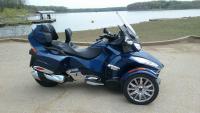
 Let's Ryde Let's Ryde
 'I'm going to Ryde and NOT Worry'. But Peter Aawen said it best. So Thank You and everyone else for your Time. 'I'm going to Ryde and NOT Worry'. But Peter Aawen said it best. So Thank You and everyone else for your Time.
There are many things that I don't understand but I try to learn and move on to something more important to me.
Have a Blessed Day My Friend. ......
ENJOY YOUR LIFE WITH A SPYDER
Ryde with a Friend and be Safe
My Spyder ..... 'Little Blue-Boy'
-
Very Active Member


This is a very good and accurate document regarding splines. FWIW, on aircraft I have worked on, all splines are assembled lubricated, except one application. That sole application is a thermoplastic male splice into a steel female splined gear.
There is plenty of fact based info in the Dan Foss document below.
https://assets.danfoss.com/documents...8en-000304.pdf
-
Very Active Member
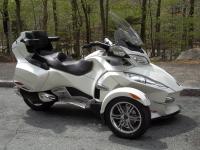

 Originally Posted by Peacekeeper6

So we have a 2018 RT-L with the semi-automatic transmission.
I was experimenting with various rpms on which to upshift, and I have found that the 2900-3100 rpm range provides the smoothest transition to the next gear. When I upshift north of 3500 rpms, I find that I am rewarded with a jerky, almost violent, transition.
It is my opinion that shifting around 3000 plus/minus 100 rpms MOST of the time will make the front pulley last longer. However, every once in a while when I really have to get on the gas, I shift close to 4k, and I cringed a little bit because it is so abrupt.
Wondering what your thoughts are on this ....
I don't recall that may RT's having pully problems, and even if there is, we all should get in the habit of checking our pulleys every oil change! I I owned a F series, I would take the pulley off, lube and torq to spec now and also keep a good eye on it!! Other than than run it like you stole it!! Ride more worry less!!!
-
Active Member
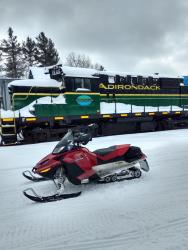

How has the updated white pulley been holding up ? As chief wrench in the household and that I'm just learning Spyder's so I'm curious on how the ''new and improved'' one is holding up.
Wife's new to her '15 F3 pulley failed on her 2nd ride, dealer covered it BTW, and it was a bear pushing it uphill to get it around the 1/4 mile guardrail section and off the road.
John
"some suffer from insanity, I choose to enjoy it"
'15 F3S SE6
'01 FLHR
Ski Doo 1200's
Boats
-
Very Active Member


 Originally Posted by cravenfun

How has the updated white pulley been holding up ? As chief wrench in the household and that I'm just learning Spyder's so I'm curious on how the ''new and improved'' one is holding up.
Wife's new to her '15 F3 pulley failed on her 2nd ride, dealer covered it BTW, and it was a bear pushing it uphill to get it around the 1/4 mile guardrail section and off the road.
Recently read, possibly on FB, an owner has already had his white pulley fail.
 Posting Permissions
Posting Permissions
- You may not post new threads
- You may not post replies
- You may not post attachments
- You may not edit your posts
-
Forum Rules
|





 Reply With Quote
Reply With Quote



 .... I have ( legally ) drag raced my 2011 RSS and my 14 RT .... I try to shift at max Torque, which is in the higher Rev range ..... always seemed smooth to me ..... However when I start the Spyder ( from parked & cold ) if I wait about 1 min. and let the Revs drop to normal, it does shift smoother even to reverse .... When not in the " twistie's ",I usually shift at very low rpm's and barely feel anything ....jmho .... Mike
.... I have ( legally ) drag raced my 2011 RSS and my 14 RT .... I try to shift at max Torque, which is in the higher Rev range ..... always seemed smooth to me ..... However when I start the Spyder ( from parked & cold ) if I wait about 1 min. and let the Revs drop to normal, it does shift smoother even to reverse .... When not in the " twistie's ",I usually shift at very low rpm's and barely feel anything ....jmho .... Mike 


 . So with that in mind - & I'm really NOT having a go at you Jay, or at any one person/poster in doing this, cos it's applicable to the discussion many posts/threads & comments from many posters, but you gave me the opportunity to have a bit of a humorous play with it so I'll use this thread/discussion as an example & in the process try not to get too far off topic by throwing this out there....
. So with that in mind - & I'm really NOT having a go at you Jay, or at any one person/poster in doing this, cos it's applicable to the discussion many posts/threads & comments from many posters, but you gave me the opportunity to have a bit of a humorous play with it so I'll use this thread/discussion as an example & in the process try not to get too far off topic by throwing this out there....  (sorry bout that pokey out bit, but it just went so well with the 'so there' bit that I just hadta!!
(sorry bout that pokey out bit, but it just went so well with the 'so there' bit that I just hadta!!  )
)
 So I'm gonna go...
So I'm gonna go... 
 Sorry - that's all for now. Bye.
Sorry - that's all for now. Bye.  'I'm going to Ryde and NOT Worry'. But Peter Aawen said it best. So Thank You and everyone else for your Time.
'I'm going to Ryde and NOT Worry'. But Peter Aawen said it best. So Thank You and everyone else for your Time. 
